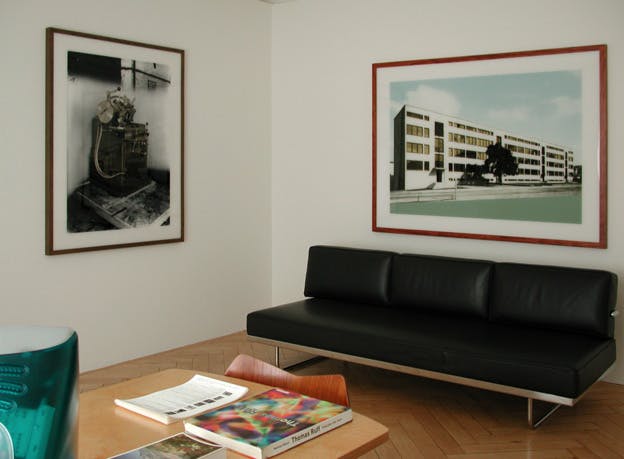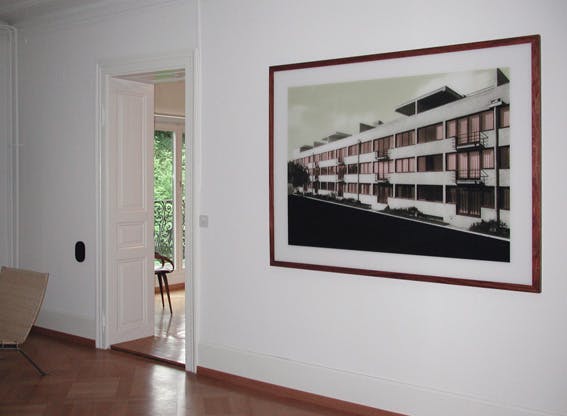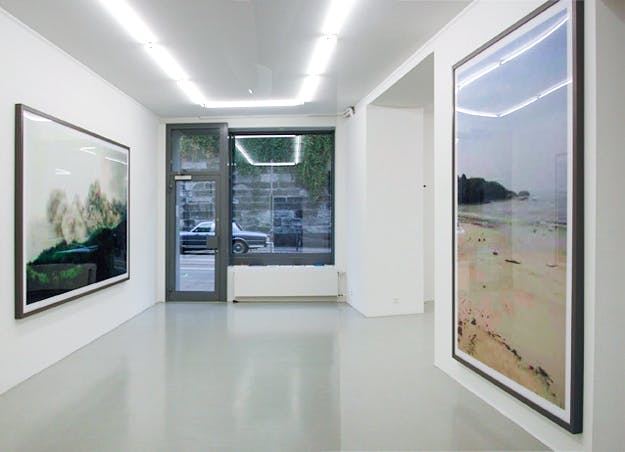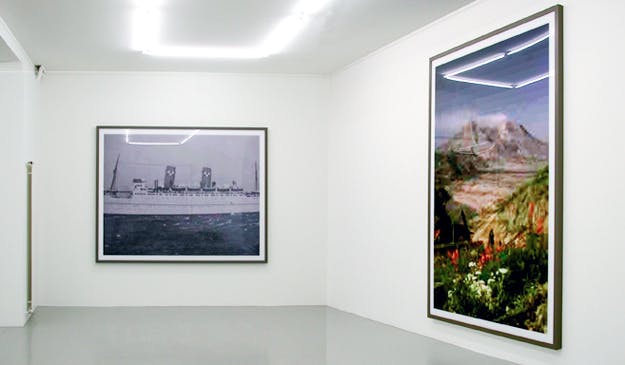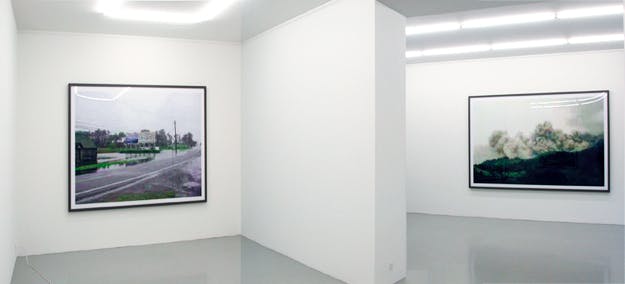The question of the visual foundations of our present runs like a thread through the work of the artist Thomas Ruff (born 1958 in Zell am Harmersbach in the Black Forest and living in Düsseldorf). This is just as evident in his photographic series entitled Interieurs, Porträts and Häusern as in the works based on the existing visual world of our everyday lives. For the past few years, Thomas Ruff has been experimenting with computer-generated pictures and pondering on the commonest platform for their dissemination, the Internet. While discovering phantasmal qualities in the flood of digital pornographic pictures in his series entitled Nudes, he was mainly occupied with the relationship between electronically imparted stimulus and information in the abstract Substrates.
In his new series, Jpeg, the artist experiments with the compression process of the same name which reduces the size of the file format of digital images. The associated irretrievable loss of information is of little importance in normal practice owing to the relatively small size of most of the images generated for computer screens. Thomas Ruff, however, is interested in the effects of compression. Through extreme enlargement of the images, he records the way in which the coding process, based on a grid of 8 x 8 pixels, gains an aesthetic impact. A closer look at these images reveals that, in addition to the degeneration of the image into its digital grid, the colour and brightness generated by the algorithms of the compression become visible, a fact that also illustrates the loss of information resulting from the process.
It also becomes clear that the image's appearance and information content have become dissociated. The association with reality is concealed, the image becomes a surface figure engendered solely by specific mathematical rules, behind which there seems to be nothing more to discover. Paradoxically, what is supposed to be presented in the image disintegrates in the process of representation, thus withdrawing from the viewer's gaze. This has nothing do with Walter Benjamin's destruction of the aura in mechanically reproduced images – on the contrary: as recent digital pictures in the press clearly show, barely decipherable images can sometimes function as putative guarantees of "authenticity". Even now, in the era of its reproducibility, the image thus remains entangled in dialectics that oscillate between myth and enlightenment. [Text: Iris Wien]






